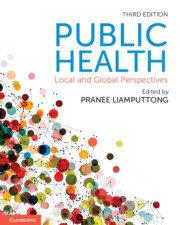Refine search
Actions for selected content:
36849 results in Cambridge Textbooks
General Index
-
- Book:
- Construction Grammar
- Published online:
- 20 September 2023
- Print publication:
- 28 July 2022, pp 312-316
-
- Chapter
- Export citation
5 - Complex Phrasal and Clausal Constructions
-
- Book:
- Construction Grammar
- Published online:
- 20 September 2023
- Print publication:
- 28 July 2022, pp 177-235
-
- Chapter
- Export citation
Dedication
-
- Book:
- Construction Grammar
- Published online:
- 20 September 2023
- Print publication:
- 28 July 2022, pp ii-ii
-
- Chapter
- Export citation
8 - Outlook: Emerging Research Topics in Construction Grammar
-
- Book:
- Construction Grammar
- Published online:
- 20 September 2023
- Print publication:
- 28 July 2022, pp 272-284
-
- Chapter
- Export citation
7 - Constructional Approaches and Formalisms
-
- Book:
- Construction Grammar
- Published online:
- 20 September 2023
- Print publication:
- 28 July 2022, pp 256-271
-
- Chapter
- Export citation
Index of Constructions
-
- Book:
- Construction Grammar
- Published online:
- 20 September 2023
- Print publication:
- 28 July 2022, pp 310-311
-
- Chapter
- Export citation
4 - Word, Phrasal and Idiom Constructions
-
- Book:
- Construction Grammar
- Published online:
- 20 September 2023
- Print publication:
- 28 July 2022, pp 103-176
-
- Chapter
- Export citation
Figures
-
- Book:
- Construction Grammar
- Published online:
- 20 September 2023
- Print publication:
- 28 July 2022, pp xvi-xvi
-
- Chapter
- Export citation
Construction Grammar: The Structure of English
-
- Book:
- Construction Grammar
- Published online:
- 20 September 2023
- Print publication:
- 28 July 2022, pp xi-xii
-
- Chapter
- Export citation
Tables
-
- Book:
- Construction Grammar
- Published online:
- 20 September 2023
- Print publication:
- 28 July 2022, pp xvii-xviii
-
- Chapter
- Export citation
Copyright page
-
- Book:
- Construction Grammar
- Published online:
- 20 September 2023
- Print publication:
- 28 July 2022, pp viii-viii
-
- Chapter
- Export citation
Dedication
-
- Book:
- Construction Grammar
- Published online:
- 20 September 2023
- Print publication:
- 28 July 2022, pp ix-x
-
- Chapter
- Export citation
6 - Constructional Variation and Change
-
- Book:
- Construction Grammar
- Published online:
- 20 September 2023
- Print publication:
- 28 July 2022, pp 236-255
-
- Chapter
- Export citation
References
-
- Book:
- Construction Grammar
- Published online:
- 20 September 2023
- Print publication:
- 28 July 2022, pp 290-309
-
- Chapter
- Export citation
3 - Morphological Constructions
-
- Book:
- Construction Grammar
- Published online:
- 20 September 2023
- Print publication:
- 28 July 2022, pp 48-102
-
- Chapter
- Export citation
Contents
-
- Book:
- Construction Grammar
- Published online:
- 20 September 2023
- Print publication:
- 28 July 2022, pp xiii-xv
-
- Chapter
- Export citation
1 - Introduction
-
- Book:
- Construction Grammar
- Published online:
- 20 September 2023
- Print publication:
- 28 July 2022, pp 1-16
-
- Chapter
- Export citation
Glossary and List of Abbreviations
-
- Book:
- Construction Grammar
- Published online:
- 20 September 2023
- Print publication:
- 28 July 2022, pp 285-289
-
- Chapter
- Export citation

Public Health
- Local and Global Perspectives
-
- Published online:
- 25 July 2022
- Print publication:
- 10 August 2022
-
- Textbook
- Export citation

Human Rights and Social Work
- Towards Rights-Based Practice
-
- Published online:
- 22 July 2022
- Print publication:
- 12 July 2022
-
- Textbook
- Export citation
